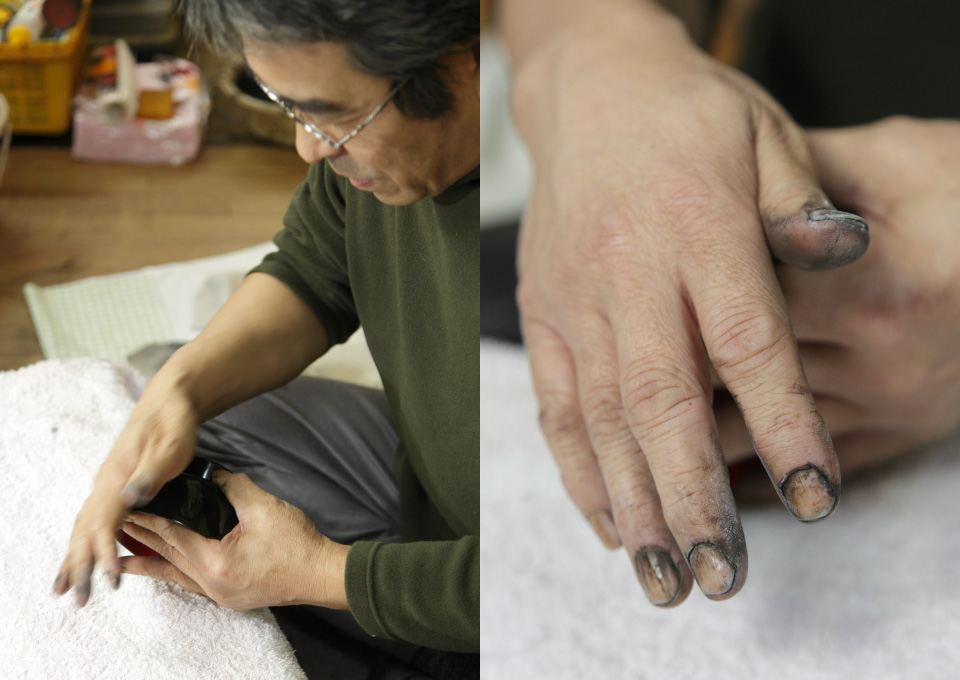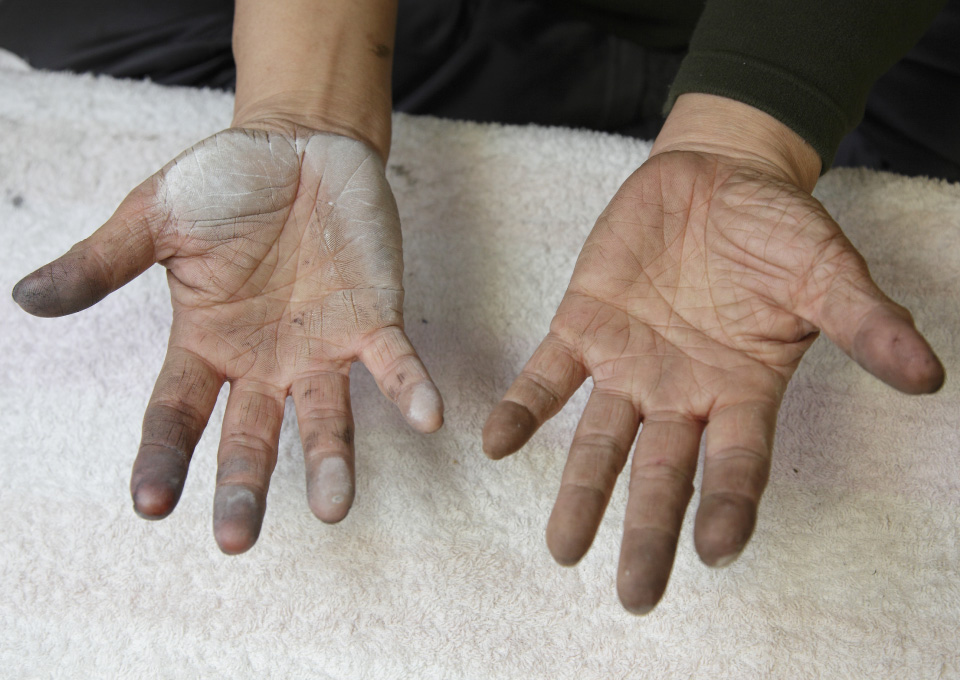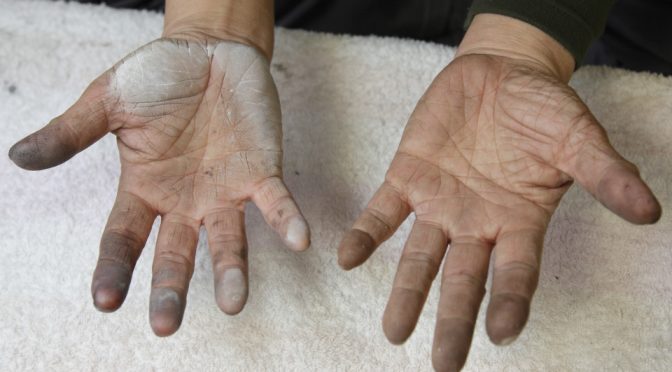Chinkin,Makie,the finished surface done by Roiro are tools to support the “decoration” of Wajima Lacquer
Blades produced by its own. Chisels of Chinkin-shi.
The second part of ‘The idea of tools’ will introduce Wajima Lacquer. Those tools are used in the “decorative” category, such as Makie, Chinkin. I think that there are also many people who know because it is taken up also on this site, one of the significant features of Wajima Lacquer is its robust first coating. By repeating placement of Urushi and having it dried, the layers become robust and enough thick. Chinkin techniques have become developed based on such characteristics as mentioned.

The tools needed to realize precise patterns are Chinkin chisels. There are some types such as one-sided, flat, rounded, dotted ones, and craftsmen selectively use them according to patterns they draw. Every craftsman has own preferences and ingenuity on its tools in general, and it is the case with Chinkin-shi. Chisels are made with steel like Katana is. Some are custom-tailored, and some are used by having the blades personalized adapting to its own way of use or preferences. Each craftsman also has its preferences also on quality of grind stones, thus many of them keep using the same grind stone once it becomes their favorite. Another tool is “pillow”, packed with buckwheat husks. Each craftsman has own pillow. Holding it between legs and placing the arms on it, craftsman performs Chinkin works. Many of them seem to work on a desk these days, but some still say that a pillow of everyone’s favorite is better to maintain stability. Mr. Yamazaki, Chinkin-shi, is told with laughter that when he was a apprentice, he was scolded by his master, “go out with a pillow.”
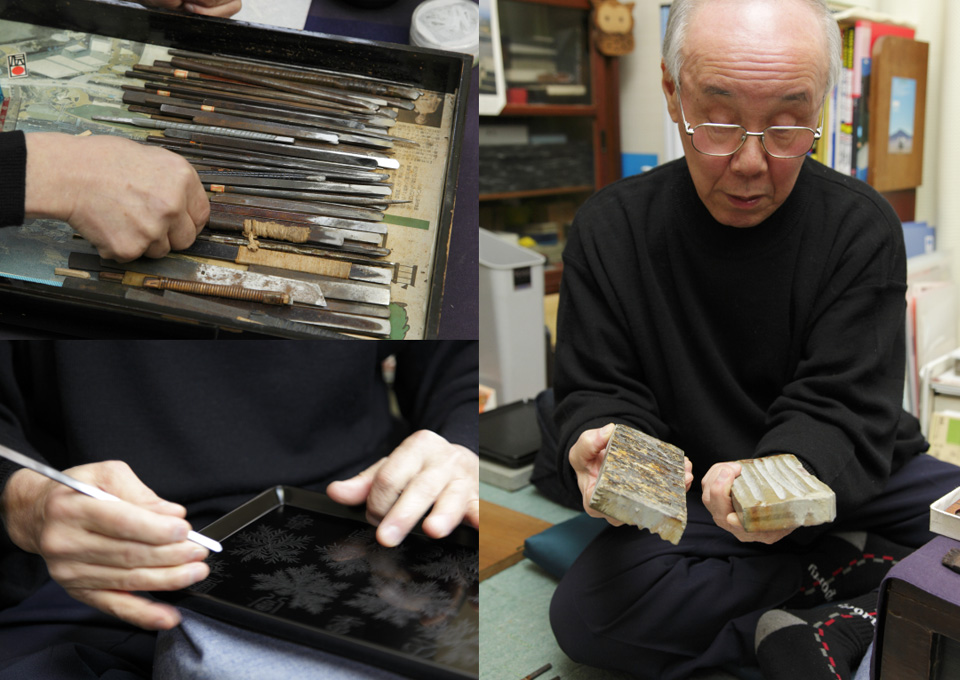
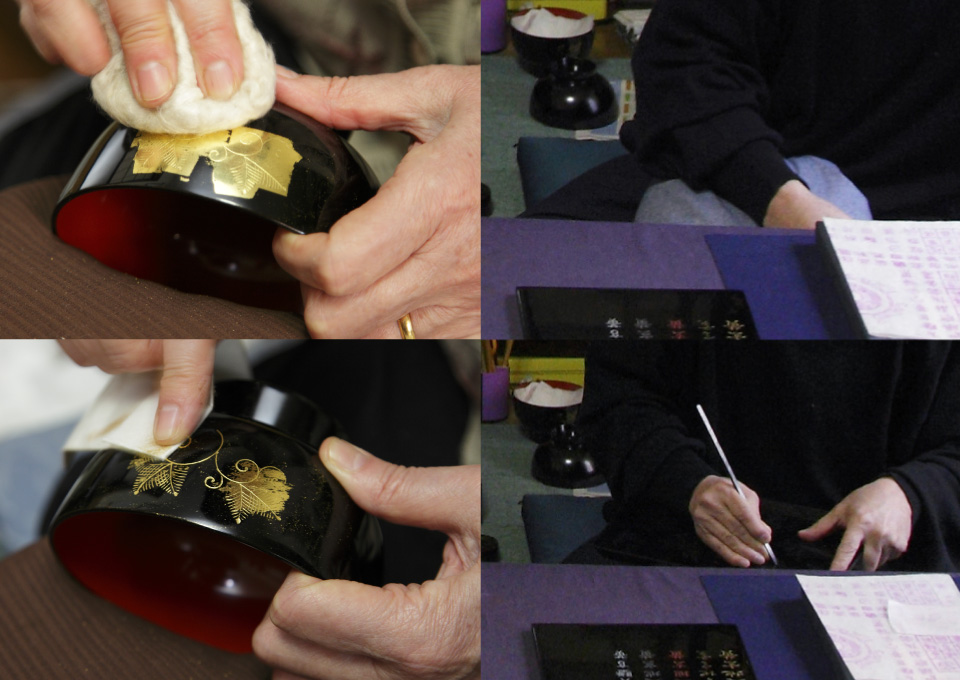
Powder tubes and Makie brushes, fabricated with selected materials by dedicated crafters
As well as Chinkin, Makie is a well-known decorative work of Wajima Lacquer. A wide range of tools and materials are used in order to draw variety of patterns in different colors on Urushi surface.
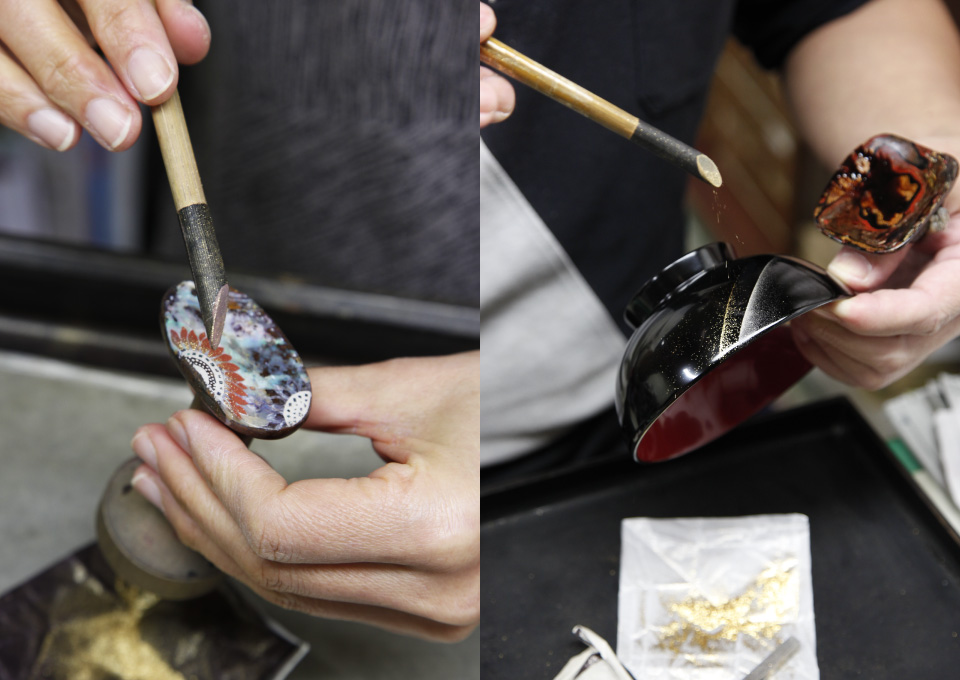
The first one is powder tube, which is a tool used to perform “lacquering” powders of gold that is the origin of the word “Makie (Lacquer or Lacquerware)”. It is basically made with bamboo, but in different diameters or with several types of pieces of silk fabric attached on the sifting surface, in order to optimize amount of powders coming out. There are also slimmer ones made with rachises of cranes. Before lacquering work mentioned in above, a work must be done is to draw patterns by Urushi on the surface. Makie is a process of having the surface lacquered with gold powders, making the patterns solidified, drying after placing transparent Urushi, and having it polished.
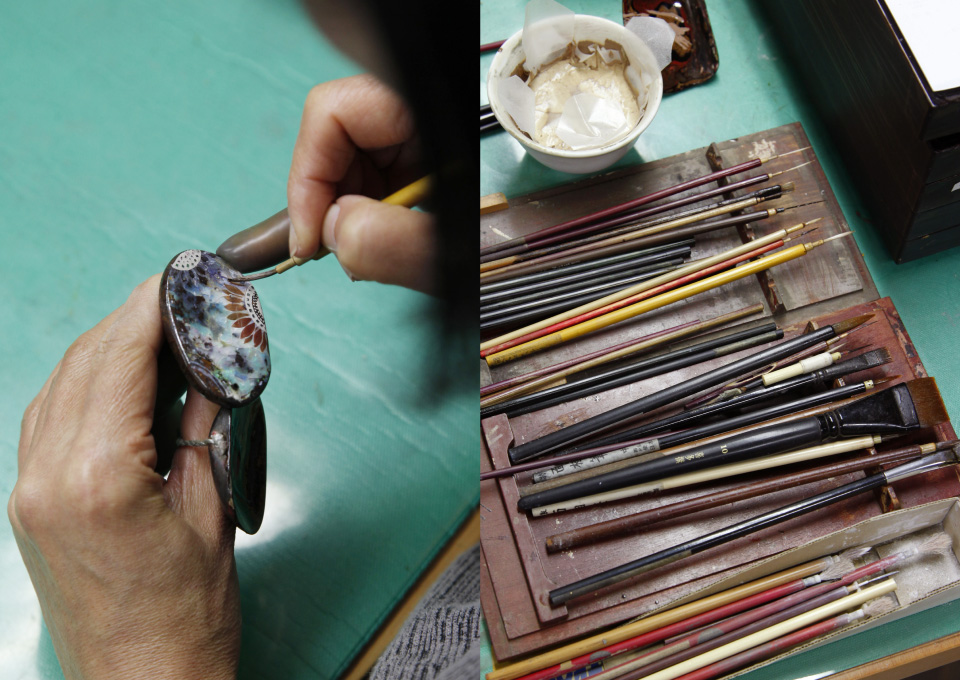
Pelage of variety of animals such as cats and mice used to be used as materials of pattern drawing brushes in the past. For brushes, in particular, to draw thin and precise lines, pelage that well takes Urushi in and smoothly runs it off is recognized preferable. Above all, the pelage of mice living in the grassland around Biwa Lake has been treated as the best choice because of its long absorptive hair however domestic procurement of such good pelage has become extremely difficult. As for lacquered powder materials there are gold, silver as well as bluish gold, and depending upon the shape of power, rounded, coarse metal flakes, pear-skin finish, and flat ones. Other than these, there is also Raden technique (taking inner surface layer of seashells and have them lacquered).
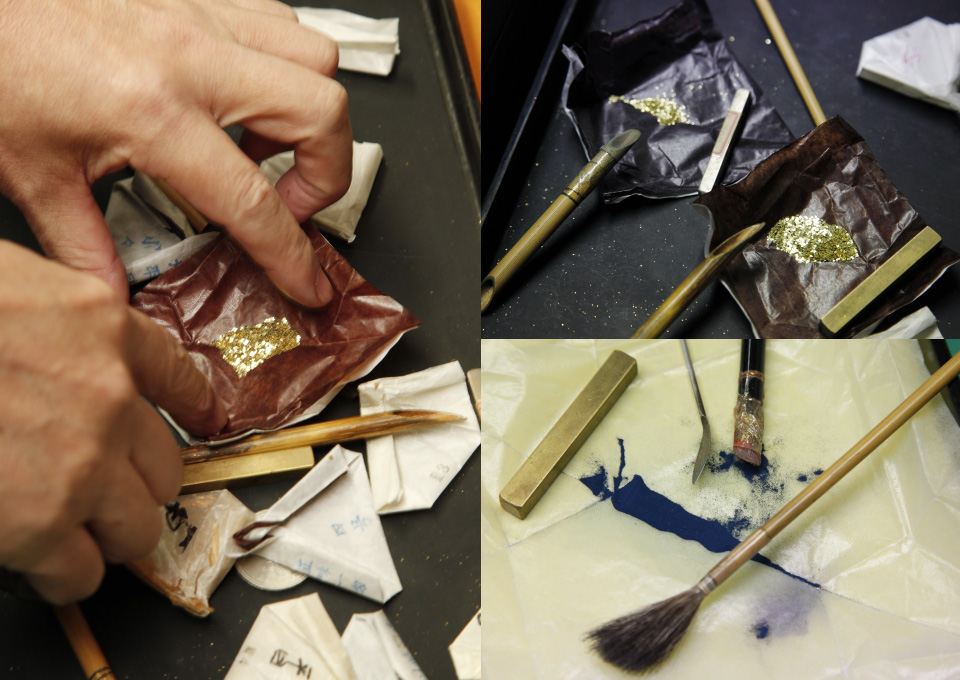
“Ultimate tools” for mirror finish
The role of Roiro-shi is to further polish the surface of Urushi, which is already layered with first, middle, and finish coats, for finalization at the level of a mirror. To perform Chinkin and Makie, this Roiro is indispensable to perform as a preparative process in fact. Products with none of Roiro, Chinkin, or Makie done are of course fine also. To polish to make it like a mirror, quality charcoal (Suruga charcoal from Shizuoka) is to be used. And for final polishing, finer Roiro charcoal is used.
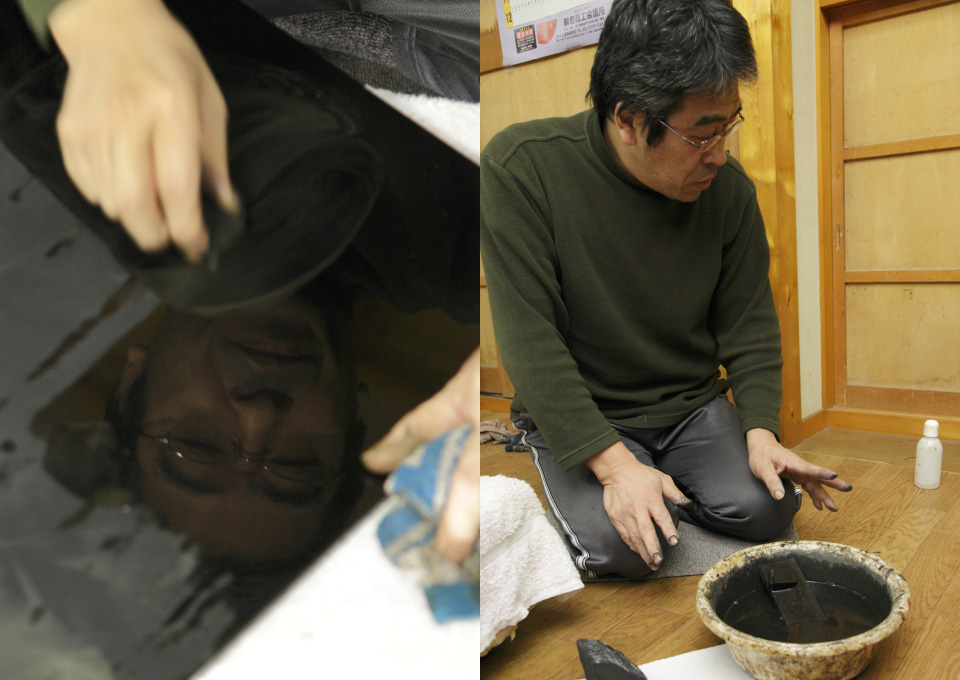
At the final stage, craftsmen use powders of oil stone and compounds, and the polish is performed directly by their hands. As skin oil and finger prints may give some influences, the “hands” of Roiro-shi performs polishing, at a ‘micron’ level, finer than those done by machines. The most excellent tool for this process is their hand. Roiro-shi uses the own hands as the ultimate tools.
